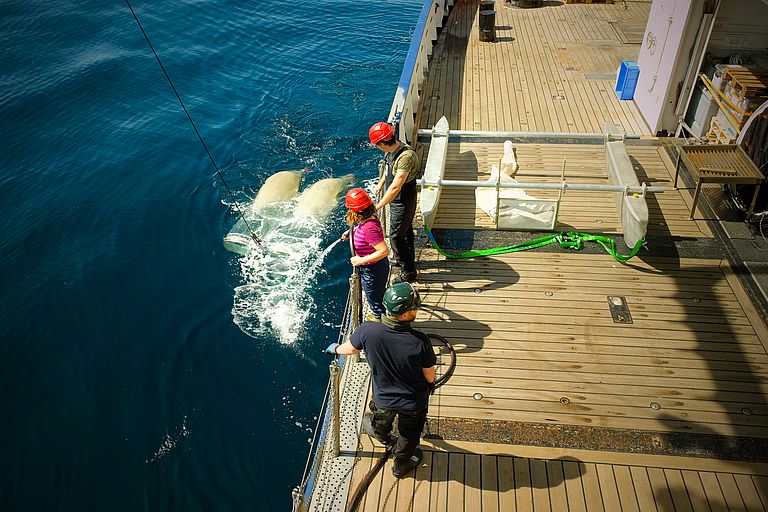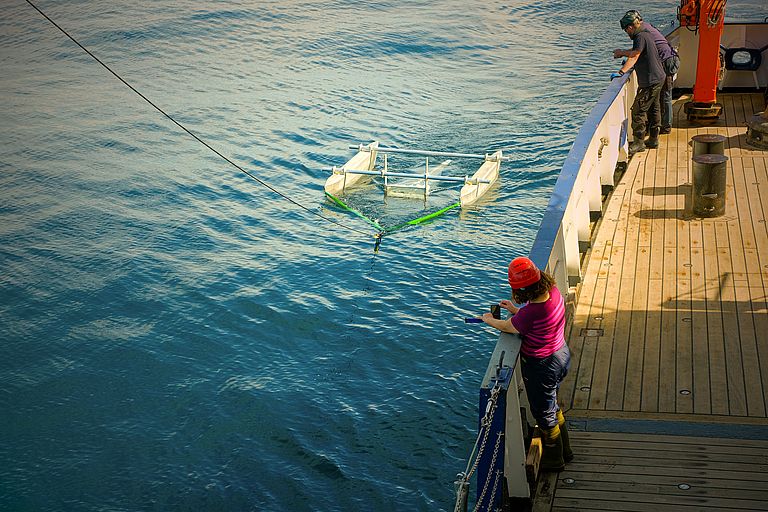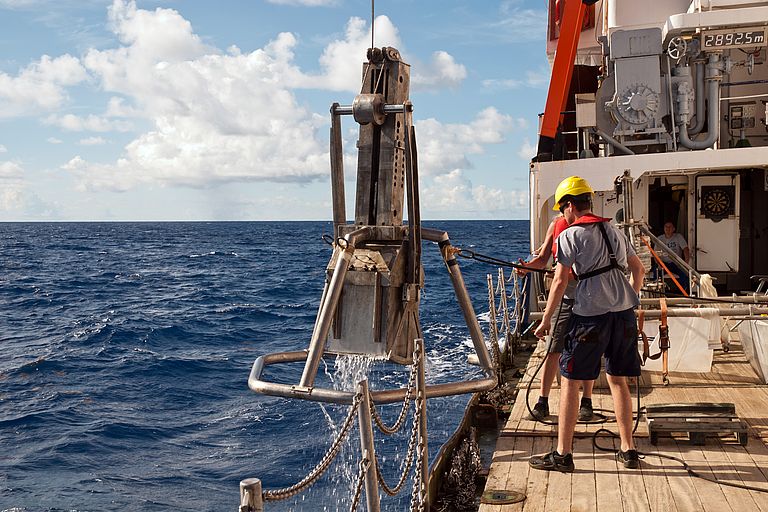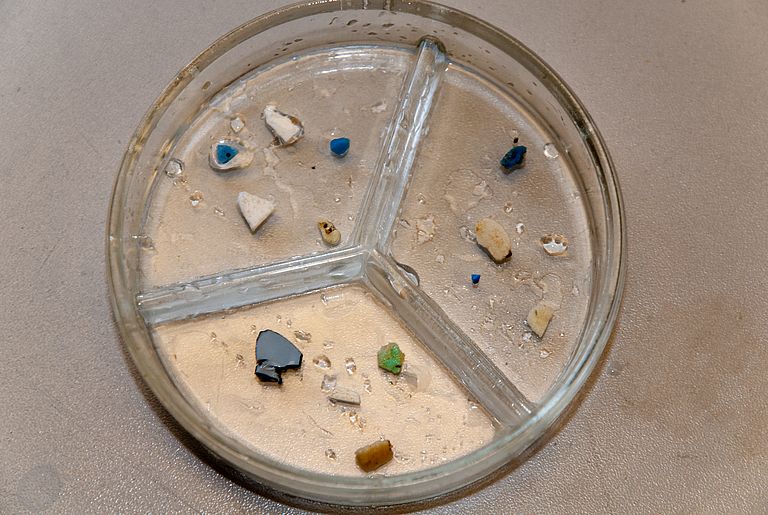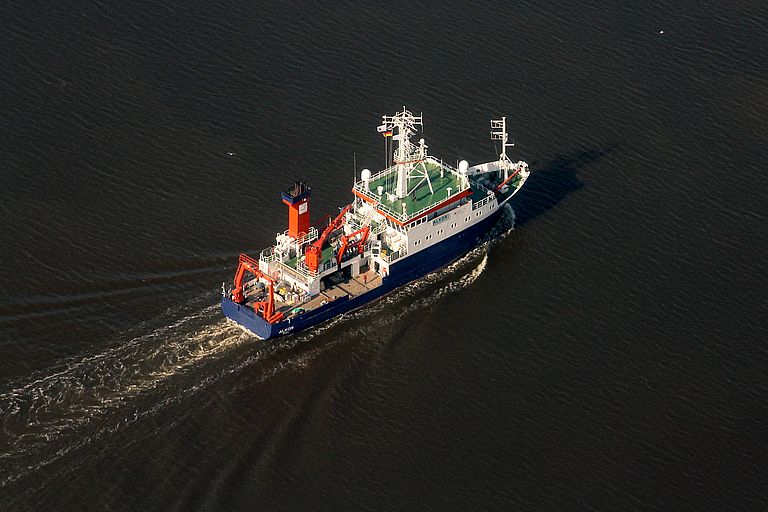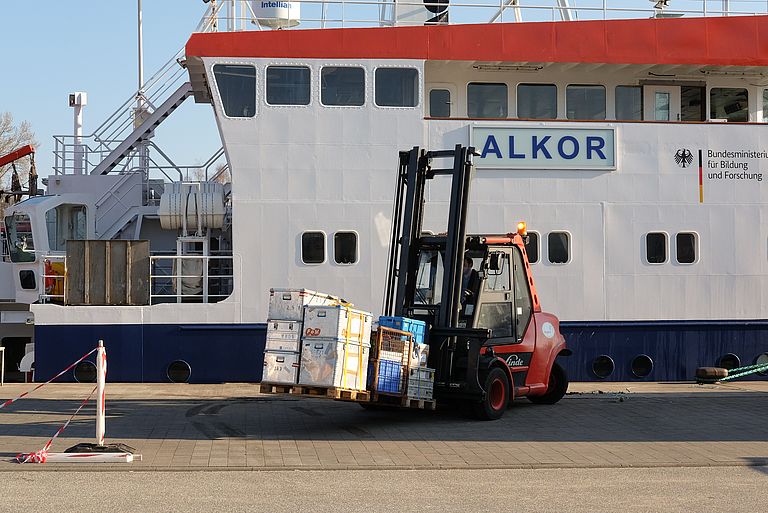Where is the plastic in the ocean?
GEOMAR coordinates new JPI-Oceans project on the distribution of plastic waste in the ocean
No one knows the exact amount of plastics discharged into the ocean. Some studies report conservative estimates of up to five million tons. Other studies put it at up to 13 million tons. This raises a problem for scientists. In the surface oceans, they only find a fraction of what has been released, when assuming plastic floats on the sea surface. Where is the rest?
This question is now being addressed by the European research project HOTMIC (Horizontal and vertical oceanic distribution, transport, and impact of microplastics). A total of six European countries are funding it over three years with a total of 2.3 million euros as part of the EU programme initiative “Healthy and Productive Seas and Oceans” (JPI Oceans). In Germany, the Federal Ministry of Education and Research is the funding agency, while the GEOMAR Helmholtz Centre for Ocean Research Kiel is coordinating the overall project. Even before the official start of the project on 1 April, the Kiel research vessel ALKOR collected samples and data for HOTMIC along the European west coast between the start of March and last Thursday.
“Less than 10 per cent of the plastic entering the ocean can currently be detected”, emphasizes project coordinator Dr. Mark Lenz from GEOMAR. The reasons for this are manifold. “Partly it is due to the fact that the plastic breaks down into tiny microplastic particles that we can only detect with difficulty at sea using current methods", adds marine chemist Prof. Dr. Eric Achterberg, one of the main applicants for the project. Another reason is probably that the plastic particles do not remain on the water surface but sink, although most plastics float in water. It is also largely unclear which mechanisms control the transport of the plastic to the depth and what ecological effects this might have.
The HOTMIC project aims to close these gaps in knowledge. To do so, it focuses on the North Atlantic as a model region and investigates the pathways of the plastic from the continent to the North Atlantic Ocean gyre. The project takes into account microplastics down to a size of less than 10 micrometers and investigates which physical, chemical, but also biological processes play a role in plastic distribution. In addition, the participants want to develop new analytical techniques that simplify the detection of microplastics and help to assess the risks of these pollutants for the marine environment.
From 5 to 26 March, the Kiel research vessel ALKOR sailed along the West European coast, and collected samples and data for HOTMIC in the outflows of major rivers such as the Seine, Thames and Elbe, but also in the Strait of Gibraltar and off the Belgian North Sea coast. "This covers the first part of the transport route from the rivers into the coastal waters", explains Dr. Aaron Beck from GEOMAR, the scientific expedition leader. “The samples must now be examined in the home laboratories,” he adds.
However, this poses a challenge for the team in pandemic times, because many particularly sensitive samples should actually be transported to the partners in Belgium, Denmark or Estonia immediately after arrival in Kiel. “Fortunately, many colleagues at GEOMAR spontaneously provided us with appropriate storage facilities so that we can keep the samples here safely until the situation returns to normal,” says Dr. Beck.
The HOTMIC consortium consists of:
GEOMAR Helmholtz Centre for Ocean Research Kiel
Institute of Hydrochemistry (IWC), Technical University Munich (TUM)
University of Southern Denmark (Denmark)
Instituto Português do Mar e da Atmosfera IPMA (Portugal)
MARE - Centre for Marine and Environmental Sciences (Portugal)
University of Pisa (Italy)
University of Ghent (Belgium)
University of Tartu (Estonia)
High-res images:
The usage of the image material provided with this press release is free for editorial purposes in conjunction with the content of this press release. The image source must be named.
